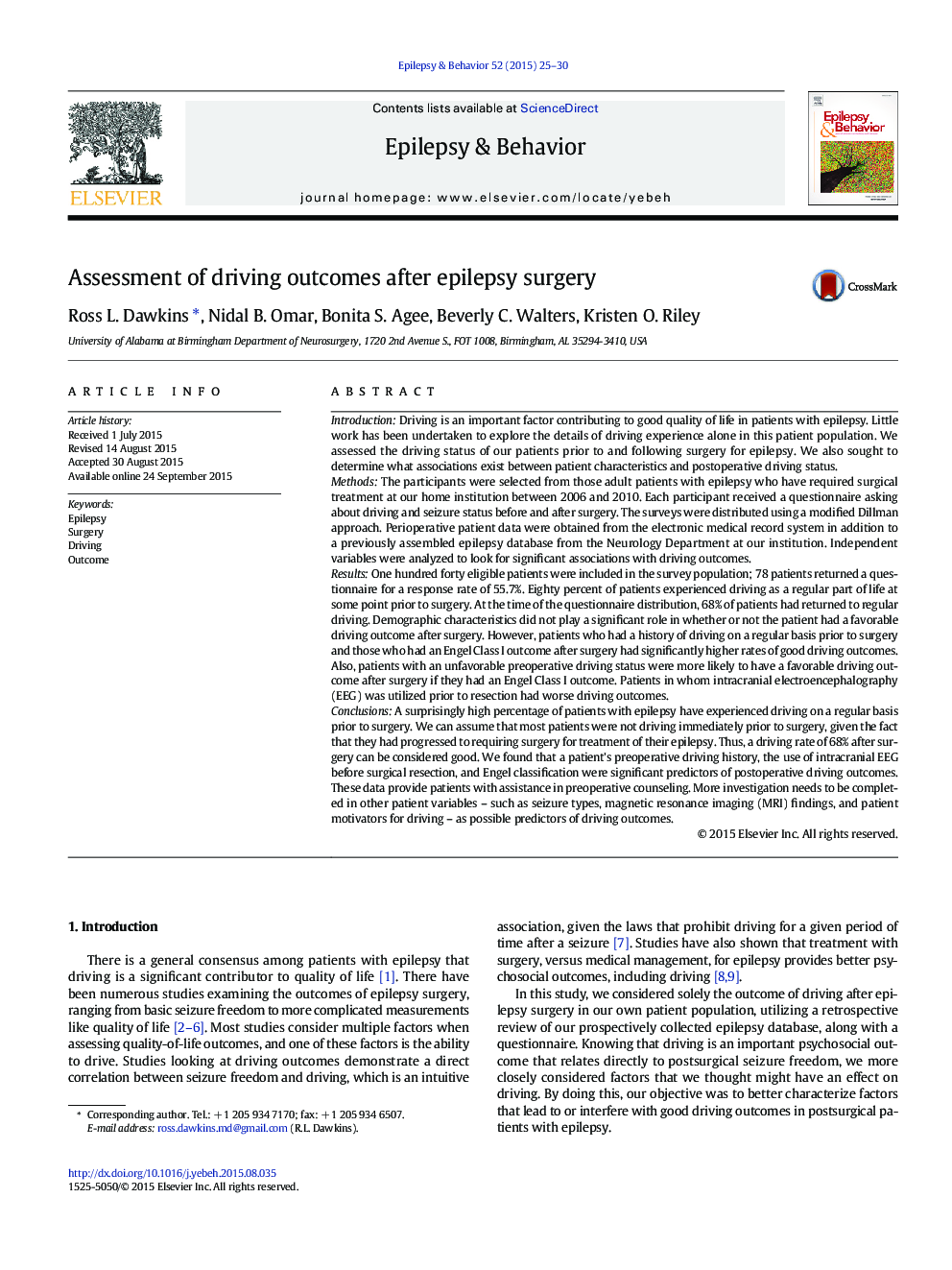| کد مقاله | کد نشریه | سال انتشار | مقاله انگلیسی | نسخه تمام متن |
|---|---|---|---|---|
| 6010366 | 1185876 | 2015 | 6 صفحه PDF | دانلود رایگان |
- Driving status contributes to quality of life in surgical patients with epilepsy.
- We looked for associations between patient characteristics and driving outcomes.
- We used medical records and a patient survey to gather data.
- Patients with a history of driving before surgery had better driving outcomes.
- Engel classification was associated with driving outcomes.
IntroductionDriving is an important factor contributing to good quality of life in patients with epilepsy. Little work has been undertaken to explore the details of driving experience alone in this patient population. We assessed the driving status of our patients prior to and following surgery for epilepsy. We also sought to determine what associations exist between patient characteristics and postoperative driving status.MethodsThe participants were selected from those adult patients with epilepsy who have required surgical treatment at our home institution between 2006 and 2010. Each participant received a questionnaire asking about driving and seizure status before and after surgery. The surveys were distributed using a modified Dillman approach. Perioperative patient data were obtained from the electronic medical record system in addition to a previously assembled epilepsy database from the Neurology Department at our institution. Independent variables were analyzed to look for significant associations with driving outcomes.ResultsOne hundred forty eligible patients were included in the survey population; 78 patients returned a questionnaire for a response rate of 55.7%. Eighty percent of patients experienced driving as a regular part of life at some point prior to surgery. At the time of the questionnaire distribution, 68% of patients had returned to regular driving. Demographic characteristics did not play a significant role in whether or not the patient had a favorable driving outcome after surgery. However, patients who had a history of driving on a regular basis prior to surgery and those who had an Engel Class I outcome after surgery had significantly higher rates of good driving outcomes. Also, patients with an unfavorable preoperative driving status were more likely to have a favorable driving outcome after surgery if they had an Engel Class I outcome. Patients in whom intracranial electroencephalography (EEG) was utilized prior to resection had worse driving outcomes.ConclusionsA surprisingly high percentage of patients with epilepsy have experienced driving on a regular basis prior to surgery. We can assume that most patients were not driving immediately prior to surgery, given the fact that they had progressed to requiring surgery for treatment of their epilepsy. Thus, a driving rate of 68% after surgery can be considered good. We found that a patient's preoperative driving history, the use of intracranial EEG before surgical resection, and Engel classification were significant predictors of postoperative driving outcomes. These data provide patients with assistance in preoperative counseling. More investigation needs to be completed in other patient variables - such as seizure types, magnetic resonance imaging (MRI) findings, and patient motivators for driving - as possible predictors of driving outcomes.
Journal: Epilepsy & Behavior - Volume 52, Part A, November 2015, Pages 25-30
